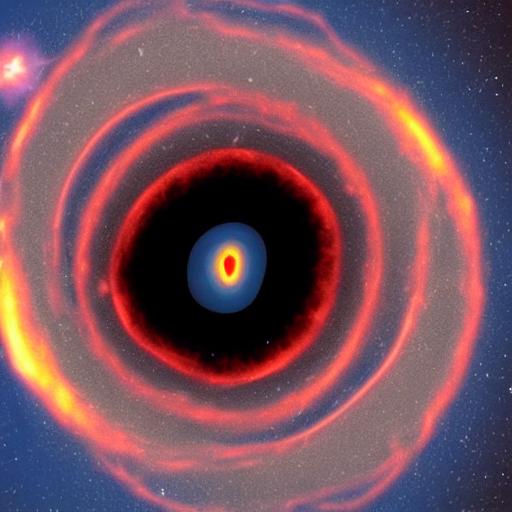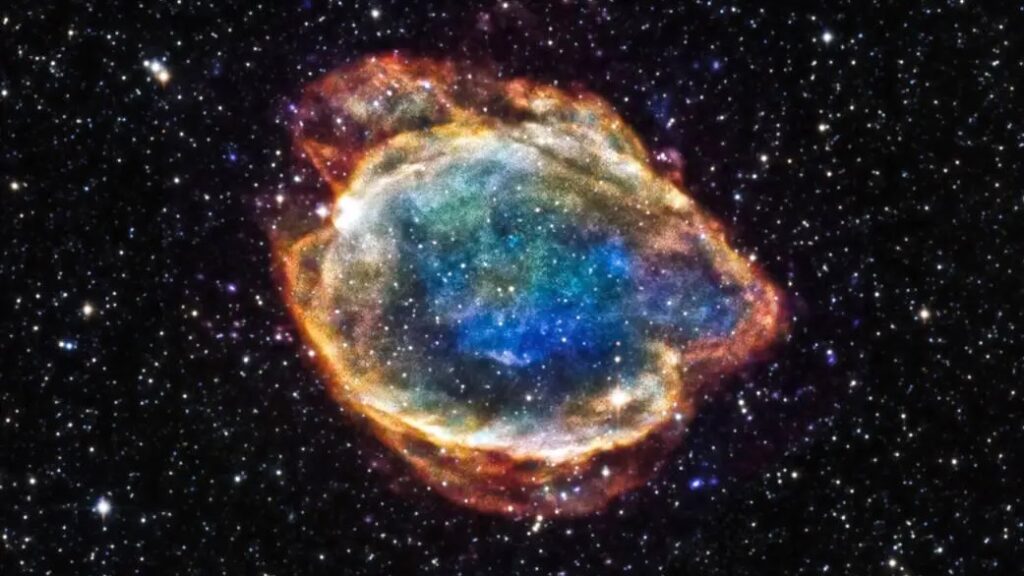Even though they may appear to be completely unrelated, black holes and Las Vegas have one thing in common: Whatever happens there, stays there, much to the frustration of astrophysicists who are trying to understand how, when, and why black holes create and grow.
The event horizon is a mysterious, invisible layer that surrounds black holes and is the boundary beyond which no material, light, or information may pass. The event horizon absorbs all traces of the black hole’s past.
According to Peter Behroozi, an associate professor at the University of Arizona Steward Observatory and a project researcher at the National Astronomical Observatory of Japan, it had been believed difficult to detect how black holes created because of these fundamental factors.
Behroozi co-led an international team with Steward doctoral student Haowen Zhang to rebuild the growth histories of black holes using machine learning and supercomputers, successfully peeled back their event boundaries to show what is beyond.
Millions of simulated “universes” were created, and the results revealed that supermassive black holes grew at the same rate as their host galaxies. Scientists had a theory about this for 20 years, but they hadn’t been able to prove it until recently. The results of the team’s study were published in a piece for Monthly Notices of the Royal Astronomical Society.
According to Behroozi, a co-author of the article, if you go back to earlier and earlier times in the universe, you find that exactly the same relationship was present. So, in the same way, that we currently see in galaxies throughout the universe, as the galaxy grows from small to huge, its black hole is also growing from small to large.
It is believed that a supermassive black hole is present at the center of the most, if not all, of the galaxies distributed throughout the cosmos. The masses of many of these black holes are millions or even billions of times greater than the mass of the sun. How these behemoths expand as quickly as they do and how they arise in the first place has been one of astrophysics’ most puzzling mysteries.
To find out, Zhang, Behroozi, and their colleagues created Trinity, a platform that uses a new type of machine learning that can generate millions of different universes on a supercomputer, each of which adheres to different physical theories about how galaxies should form. The researchers created a framework in which computers propose new rules for the evolution of supermassive black holes over time.
They then “watched” the virtual universe to see if it corresponded with decades of actual observations of black holes throughout the real universe. They utilized those principles to mimic the growth of billions of black holes in the virtual universe. After millions of proposed and rejected rule sets, the computers finally settled on the rule sets that best described observed data.
Behroozi stated, they are attempting to comprehend the rules concerning how galaxies form. In essence, they ask Trinity to make educated guesses about possible physical rules, then they let them loose in a computer-generated universe to see how that universe behaves. Does it resemble the real one in any way or not?
The researchers claim that this method applies as well to all other objects in the universe, not just galaxies.
The project’s three main research areas are galaxies, their supermassive black holes, and their dark matter halos, which are vast cocoons of dark matter that are invisible to direct measurements but whose existence is required to explain the physical properties of galaxies everywhere. These three fields of study are known collectively as the Trinity. In earlier studies, the researchers’ framework, known as the UniverseMachine, was used to simulate millions of galaxies and their dark matter halos. The researchers found that galaxies expanding in their dark matter halos adhere to a very particular relationship between the galaxy’s mass and that of the halo.
According to Behroozi, In their recent work, they included black holes in this relationship, and they then pondered how black holes may develop in those galaxies to reproduce all of the data that have been reported about them.
According to Zhang, the principal author of the study, they have very good observations of black hole masses. The local universe is generally excluded from those, though. It becomes increasingly challenging and ultimately impossible, to measure the correlations between the masses of black holes and their host galaxies as you gaze farther away. Observations can’t immediately tell us whether that relationship remains true throughout the universe because of that ambiguity.
By combining data from millions of observed black holes at various phases of their growth, Trinity enables astrophysicists to get over not only that restriction but also the event horizon information barrier for individual black holes. The researchers could assess the average growth history of all black holes when they were taken as a whole, despite not being able to recreate the history of any particular black hole.
You can compare the generated universe to all the observations of actual black holes that we have if you put black holes into the simulation galaxy and enter rules about how they grow, Zhang said. We can then reconstruct how any black hole or galaxy in the universe looked from today all the way back to the beginning of time.
The simulations also shed light on another mysterious phenomenon: supermassive black holes, like the one at the center of the Milky Way, expanded most rapidly in their early stages, when the universe was just a few billion years old, before seeing a sharp decline during the last 10 billion years.
We’ve known for a long that galaxies have this peculiar behavior, where their rate of new star formation reaches a peak, then it declines over time, and finally, later on, they cease generating stars altogether, Behroozi said. Now, we can demonstrate that black holes behave similarly, expanding and contracting in tandem with their host galaxies. This supports a long-held theory concerning the development of black holes in galaxies.
But the outcome raises further queries, he continued. Comparatively speaking, black holes are far smaller than the galaxies they occupy. The supermassive black hole in the Milky Way would be the size of the period at the end of this sentence if it were scaled down to the size of Earth.
It takes synchronization between gas flows at very different scales for the black hole to double in mass within the same timescale as the larger galaxy. It is yet unknown how black holes and galaxies work together to maintain this balance.
The truly novel aspect of Trinity, in Zhang’s opinion, is that it allows them to determine what kinds of connections between black holes and galaxies are consistent with a wide range of different datasets and observational methods.
The algorithm enables them to identify precisely those relationships between dark matter halos, galaxies, and black holes that can reproduce all of the observations made. It essentially says, ‘OK, given all of this data, they know the connection between galaxies and black holes must look like this, rather than like that. And that strategy is extremely effective.









